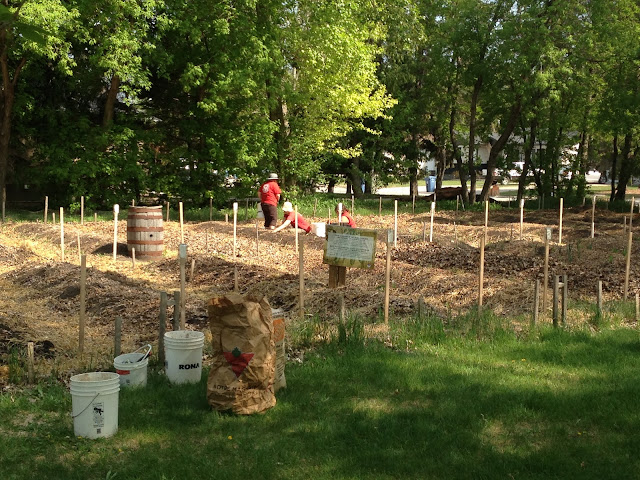This week it has become apparent that spring is here.
After our weeding work was finished for the day, we went to see how our new nannyberry was doing and realized that the lilacs were in bloom. What a pleasure on a beautiful spring day.
 |
| Lilacs and the new Nannyberry |
Now we looked about with new eyes. Walking east, here is another view of the lilacs.
 |
| Lilacs at Riel House |
Chokecherries are called Takwahiminana by the Cree and Michif people. They call crushed or pounded chokecherries Pa-kwa-mi-na-na. Alternately the Metis refer to them as lii grenn or lii siriz.
 |
| Chokecherry Blossoms |
In the Parking Lot Garden, here was a new blossom for the season:
 |
| NORTHERN BOG VIOLET Viola nephrophylla |








